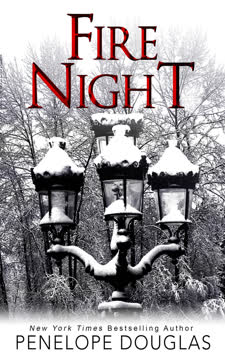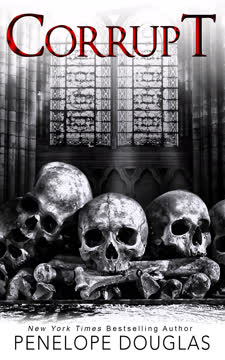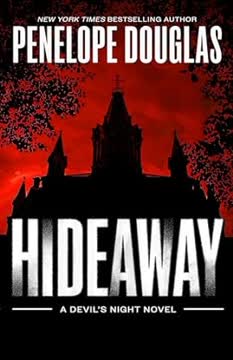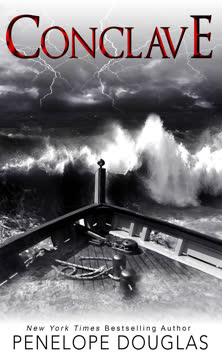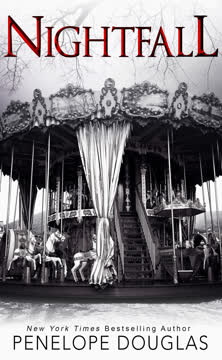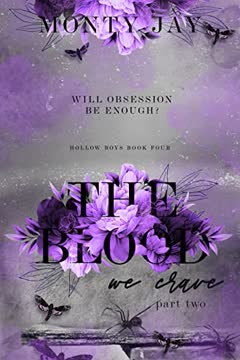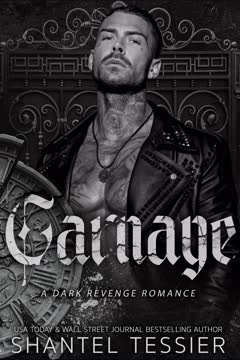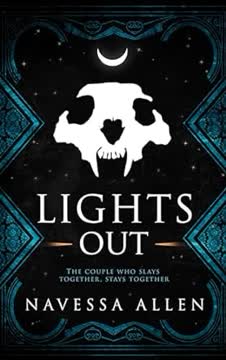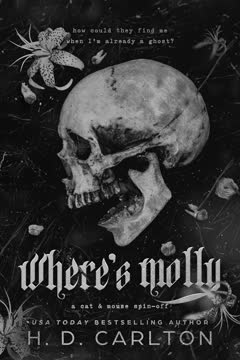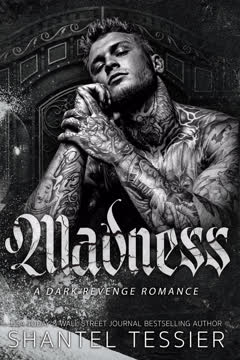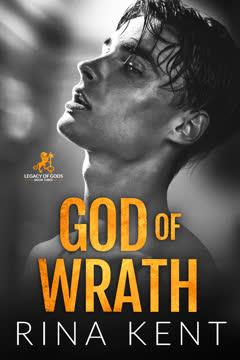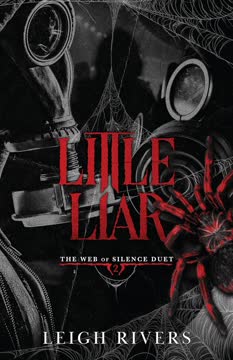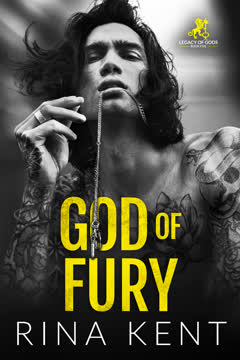Plot Summary
Homecoming and Hearth
Kai returns to his childhood home, relishing the comfort and safety it provides. The house, a blend of his parents' Japanese and Western tastes, is alive with the scents of herbs and the laughter of his daughter, Jett, baking with her grandmother. The family's closeness is palpable, and Kai reflects on his own upbringing compared to his friends' more tumultuous childhoods. The scene is set for Fire Night, a new tradition in Thunder Bay, as the family prepares for a night of celebration, togetherness, and the subtle undercurrent of past mistakes and hopes for the future.
Lessons in the Dojo
In the family dojo, Banks spars with Kai's father, learning not just physical skills but the importance of seeing the whole picture—of being aware, not just focused. The lesson is both literal and metaphorical, as Banks, who grew up without parents, is embraced by Kai's family. The dojo becomes a place of healing and connection, where past traumas are soothed by new bonds. The family's strength is rooted in these lessons, preparing them for whatever dangers may come, even as they hope for a peaceful night.
Fire Night Traditions
As night falls, the family walks through snow-lit streets to St. Killian's, joining the town's Fire Night celebration. The tradition—no electric lights, only fire—transforms Thunder Bay into a magical, haunting landscape. Lanterns, bonfires, and candlelight create an atmosphere of wonder and unity. The children, dressed in festive attire, are enchanted by the spectacle, and the adults savor the rare calm. The night is a celebration of light in darkness, of community, and of the fragile peace the family has built.
Family and Festivities
The extended family and friends converge at St. Killian's, each bringing their own histories and dynamics. The children play, the adults dance, and old rivalries and affections surface. The Fire Night ritual—burning basil leaves with wishes for the new year—highlights the hope and vulnerability of both young and old. Amidst the joy, there are hints of unease: the lack of security, the openness of the gathering, and the ever-present possibility that the past may intrude on their present happiness.
The Phantom's Challenge
The festivities are interrupted by a dramatic entrance: a masked rider on a black horse issues a riddle, launching a treasure hunt for the town's youth. The challenge is both playful and ominous, echoing the gothic traditions of Devil's Night and the family's own history of secrets and games. The children are eager, the adults wary, and the sense of foreshadowing grows as the night deepens. The line between celebration and danger blurs, setting the stage for the night's true test.
Jealousy and Assurance
Amid the revelry, Kai and Banks confront a moment of jealousy when a young student flirts with Kai. Banks' possessiveness is both a source of tension and a testament to the depth of their bond. Kai reassures her with a family heirloom, a gesture that speaks to trust, legacy, and the promise that their love is unbreakable. Their private moment is a microcosm of the larger theme: the struggle to feel secure in a world where threats—real or imagined—are never far away.
The Disrupted Celebration
The night's peace is shattered when a dead body is discovered in the house. The children are missing, and chaos ensues as the adults realize a kidnapping has taken place. The family's worst fears are realized: their enemies have found a way in, exploiting the openness of the celebration. The sense of safety is gone, replaced by urgency, guilt, and the desperate need to protect what matters most. The family's unity is tested as they mobilize to recover their children.
The Kidnapping
Security footage reveals that Mads and Octavia have been abducted by men with old grudges—Ilia Oblonsky and Taylor Dinescu, both connected to the family's dark past. The adults are forced to confront the consequences of their history, realizing that their power and notoriety have made their children targets. The kidnapping is not just a crime but a reckoning, forcing each character to face their own fears, regrets, and responsibilities as parents and protectors.
The Chase Begins
The family splits into teams, racing through the snow-covered town and countryside in pursuit of the kidnappers. The chase is both physical and psychological, as each parent grapples with guilt, anger, and the fear of loss. The town's traditions and celebrations become obstacles and cover for the criminals, and the family's resources and skills are put to the test. The urgency of the pursuit is heightened by the storm, the darkness, and the ticking clock.
Storm on the Water
The trail leads to the marina and out onto the stormy ocean, where the kidnappers have taken the children onto a yacht. The adults commandeer a speedboat, braving the elements and their own doubts as they race to intercept the vessel. The storm is both literal and symbolic, representing the chaos and danger that threaten to engulf the family. The rescue is a test of courage, skill, and the bonds that hold them together.
Rescue and Reckoning
The family catches up to the kidnappers, finding Mads and Octavia alive but shaken. Mads, in particular, has demonstrated a chilling efficiency in defending himself and his cousin, raising questions about the cost of the family's legacy. The kidnappers are subdued, but not without violence and loss. The immediate danger is over, but the emotional aftermath lingers. The family is forced to reckon with what they have taught their children—and what they have survived.
Aftermath and Reflection
Back at home, the family processes the night's events. The children are resilient, eager to return to normalcy, but the adults are haunted by what might have been. Damon, in particular, confronts his estranged mother, Christiane, in a moment of vulnerability and tentative reconciliation. The themes of forgiveness, generational cycles, and the longing for parental love are explored as the characters seek solace in each other and in the rituals that bind them.
Generational Wounds
Damon's conversation with Christiane reveals the deep scars left by neglect, addiction, and abuse. Both mother and son struggle to bridge the gap between them, acknowledging the pain but also the possibility of healing. The scene underscores the novel's central concern: how the wounds of one generation are passed to the next, and how love—imperfect and hard-won—can begin to break the cycle.
Parenting and Doubt
The parents, especially Damon and Kai, wrestle with doubts about their ability to protect and guide their children. The events of the night force them to question their choices, their values, and the example they set. Winter reassures Damon that their children are happy and loved, offering a moment of grace and acceptance. The struggle to be a good parent, despite one's own brokenness, is at the heart of the story.
The Children's Resilience
The children, especially Octavia and Mads, display remarkable resilience in the face of trauma. Their ability to return to play, to wish for adventures, and to find comfort in each other is a testament to the strength of the family's love. The adults marvel at their children's capacity for joy and healing, even as they worry about the shadows that linger.
The Ghost Ship Wish
Octavia's wish for a ghost ship—a symbol of adventure and the unknown—captures the spirit of the next generation. Mads, more reserved and haunted, finds solace in her company and in the rituals of folding origami and sharing secrets. The children's dreams and fears are both a continuation and a departure from their parents', suggesting that the future is unwritten and full of possibility.
Unbreakable Bonds
As the night ends, the family gathers to celebrate, to open presents, and to reaffirm their commitment to each other. The events of Fire Night have tested and strengthened their bonds, reminding them that love, loyalty, and courage are their greatest defenses against the darkness. The story closes with a sense of hope: the family, scarred but unbroken, faces the future together, ready for whatever comes next.
Characters
Kai Mori
Kai is the emotional anchor of his family, shaped by a disciplined upbringing and a deep sense of responsibility. As a husband to Banks and father to Jett and Mads, he strives to balance strength with tenderness. Kai's journey is one of learning to trust, to let go of guilt, and to accept that love is both a shield and a vulnerability. His relationship with his father and his role as a teacher in the dojo reflect his commitment to legacy and growth, even as he fears the consequences of his own past.
Banks Mori
Banks, Kai's wife, is marked by a childhood of neglect and trauma. Her integration into the Mori family is both healing and fraught, as she grapples with feelings of unworthiness and the fear of loss. Fiercely protective of her children and husband, Banks' jealousy and insecurity are rooted in a deep need for assurance. Her development is a testament to the power of chosen family and the slow, painful process of learning to trust in love.
Damon Torrance
Damon is a complex figure, both feared and loved. His past is marred by abuse and abandonment, particularly by his mother, Christiane. As a father, he is both strict and indulgent, struggling to break the cycle of pain he inherited. Damon's journey in Fire Night is one of tentative reconciliation—with his mother, with his own failings, and with the possibility of forgiveness. His bond with his children, especially Octavia, is fierce and tender, revealing the depth of his longing for connection.
Will Grayson
Will provides levity and warmth, balancing the intensity of his friends with humor and affection. As a husband to Emmy and father to Indie and Finn, he is devoted and present, though not without his own insecurities. Will's role in the group is that of the glue—keeping spirits high, traditions alive, and reminding everyone of the joy that can be found even in darkness.
Michael Crist
Michael is the planner and protector, always thinking several steps ahead. His relationship with Rika and their children is central to his identity, and he is acutely aware of the dangers that come with power and notoriety. Michael's struggle is to balance vigilance with trust, to allow his family to live fully without succumbing to paranoia. His leadership is both a gift and a burden.
Rika Crist
Rika's past is one of isolation and longing, but she has emerged as a strong, compassionate presence in her family. Pregnant and fiercely protective, Rika is the emotional core of her household. Her ability to forgive, to hope, and to build new traditions is a model for the next generation. Rika's journey is one of transformation—from victim to matriarch, from outsider to leader.
Winter Ashby
Winter, Damon's wife, is a calming influence, offering wisdom and reassurance in moments of crisis. Her blindness is both a challenge and a source of insight, allowing her to perceive what others miss. Winter's love for her family is unwavering, and her ability to soothe Damon's fears is crucial to the family's healing. She embodies the theme that true vision comes from the heart.
Mads Mori
Mads, Kai and Banks' son, is introspective, sensitive, and highly intelligent. His discomfort in social situations masks a deep capacity for action and courage, as revealed during the kidnapping. Mads' struggle is to reconcile his inner world with the expectations of his family, to find his place without losing himself. His relationship with Octavia is a source of comfort and understanding.
Octavia Torrance
Octavia, Damon and Winter's daughter, is bold, imaginative, and unafraid. Her zest for life and her ability to bounce back from trauma are both inspiring and poignant. Octavia's dreams—of ghost ships and treasure hunts—symbolize the hope and possibility of the future. She is both a leader and a catalyst, drawing others into her orbit and reminding the adults of the resilience of youth.
Christiane
Christiane's presence is a reminder of the wounds that parents can inflict, intentionally or not. Her attempts to reconcile with Damon are fraught with pain and regret, but also with the possibility of healing. Christiane's story is a cautionary tale about the cost of neglect and the power of persistence. Her love, though flawed, is ultimately redemptive.
Plot Devices
Interwoven Perspectives
Fire Night employs shifting points of view, allowing readers to experience the story through the eyes of different characters. This structure enriches the narrative, providing insight into each character's fears, hopes, and motivations. The interwoven perspectives create a tapestry of emotion, highlighting the interconnectedness of the family and the complexity of their relationships.
Ritual and Tradition
The Fire Night celebration, with its rituals of candle-lighting, wish-burning, and treasure hunts, serves as both backdrop and catalyst. These traditions are not just festive—they are acts of hope, resistance, and remembrance. The rituals ground the characters, offering moments of connection and meaning amid chaos. They also serve as foreshadowing, hinting at the dangers and challenges to come.
Foreshadowing and Symbolism
The narrative is laced with foreshadowing: the lack of security, the openness of the house, the references to past enemies. Symbols—such as the family heirloom comb, the ghost ship, and the key with a cryptic message—underscore the themes of legacy, mystery, and the unknown. These devices create a sense of inevitability, drawing the reader toward the story's climax.
Generational Cycles
The story is deeply concerned with the ways in which trauma, love, and resilience are passed from one generation to the next. The parents' struggles are echoed in their children's experiences, and the choices made in the past reverberate in the present. This cyclical structure invites reflection on the possibility of breaking harmful patterns and forging new paths.
High-Stakes Action
The kidnapping and rescue sequence injects urgency and danger, forcing the characters to act under pressure. The action is not just physical—it is emotional, revealing the true nature of each character and the strength of their relationships. The crisis serves as a crucible, burning away pretense and leaving only what is essential.
Analysis
Fire Night is a meditation on family, legacy, and the enduring power of love in the face of danger and trauma. Through its intergenerational cast and high-stakes action plot, the novella explores how the wounds of the past shape the present, and how healing is possible through connection, forgiveness, and the creation of new traditions. The story is both a celebration and a caution: it revels in the joy and resilience of its characters, while acknowledging the ever-present threat of old enemies and unresolved pain. Ultimately, Fire Night argues that true strength lies not in invulnerability, but in the willingness to love fiercely, to confront one's fears, and to build a future where the next generation can dream, hope, and—when necessary—fight for what matters most.
The interwoven perspectives of characters like Kai, Banks, Damon, and their children provide a rich tapestry of emotions and experiences. Each character's journey is a testament to the complex nature of family relationships and the ways in which past traumas can shape present actions. The novel's use of ritual and tradition, particularly the Fire Night celebration, serves as both a unifying force for the community and a backdrop against which the drama unfolds.
Foreshadowing and symbolism are skillfully employed throughout the narrative, creating a sense of impending danger that keeps readers on edge. The ghost ship, a recurring motif, represents both the allure of adventure and the haunting presence of the past. Similarly, the family heirloom comb given by Kai to Banks symbolizes the passing down of legacy and the strength of their bond.
The novel's exploration of generational cycles is particularly poignant. Characters like Damon and Christiane grapple with the consequences of past actions and the possibility of breaking harmful patterns. This theme resonates throughout the story, as parents strive to protect their children from the shadows of their own pasts.
The climactic kidnapping and rescue sequence serves as a crucible for the characters, testing their bonds and forcing them to confront their deepest fears. This high-stakes action not only propels the plot forward but also reveals the true nature of each character under pressure.
In the end, Fire Night is a powerful exploration of the resilience of family bonds in the face of adversity. It suggests that while the past cannot be erased, it can be confronted and, through love and understanding, its wounds can begin to heal. The story leaves readers with a sense of hope, emphasizing that the strength of family lies not in perfection, but in the unwavering commitment to stand together, no matter what challenges arise.
Last updated:
FAQ
Synopsis & Basic Details
What is Fire Night about?
- A Festive Kidnapping: Fire Night is a bonus novella in the Devil's Night series, set during the winter solstice celebration in Thunder Bay. It follows the Mori, Torrance, Crist, and Grayson families as their annual "Fire Night" festivities are violently interrupted by the kidnapping of Kai's son, Mads, and Damon's daughter, Octavia, by old enemies seeking revenge.
- A Race Against Time: The story quickly transforms into a high-stakes chase as the parents, known for their dark pasts and formidable skills, race against a snowstorm and the clock to rescue their children from the clutches of Ilia Oblonsky and Taylor Dinescu.
- Family Bonds Tested: Beyond the action, the novella delves into the emotional and psychological impact of the event on the parents, exploring themes of generational cycles, the complexities of parenting, and the unwavering strength of their chosen family bonds in the face of external threats.
Why should I read Fire Night?
- Deep Dive into Beloved Characters: Readers who love the Devil's Night series will appreciate the intimate look into the lives of Kai, Banks, Damon, Winter, Michael, Rika, Will, and Emmy as parents, revealing new layers of their personalities and relationships under extreme pressure. It offers crucial insights into their motivations and fears.
- High-Stakes Emotional Thriller: Beyond the typical dark romance, Fire Night delivers a gripping, fast-paced narrative with a strong emotional core. The kidnapping plot provides intense suspense, forcing characters to confront their pasts and the consequences of their powerful lives, making it a compelling read for fans of action and emotional depth.
- Exploration of Found Family & Legacy: The novella powerfully showcases the unbreakable bonds of the "Horsemen" and their wives, highlighting how their shared history and loyalty form an impenetrable unit. It also delves into the complex legacy they are passing to their children, raising questions about protection, strength, and the cycle of violence.
What is the background of Fire Night?
- Devil's Night Series Context: Fire Night is a bonus novella set approximately ten months before the epilogue of Nightfall, the fifth book in Penelope Douglas's Devil's Night series. It assumes prior knowledge of the main characters and their intricate, often dark, backstories and relationships within the fictional town of Thunder Bay.
- Thunder Bay's Unique Traditions: The story is set against the backdrop of Thunder Bay's "Fire Night," a new tradition celebrating the winter solstice where the town is lit solely by fire (candles, lanterns, bonfires). This festive, almost gothic, atmosphere contrasts sharply with the violent events, highlighting the fragile peace the characters have built.
- Consequences of Past Actions: The central conflict—the kidnapping—directly stems from the protagonists' past actions and enemies, specifically Gabriel Torrance's former employee Ilia Oblonsky and Taylor Dinescu, a figure from Damon's Blackchurch past. This emphasizes the enduring repercussions of their earlier choices and the generational cycles of conflict.
What are the most memorable quotes in Fire Night?
- "If you look too closely, you won't see anything. Do you understand?": Kai's father imparts this wisdom to Banks during their dojo training, a profound lesson in perception that extends beyond combat to life itself. It symbolizes the need for a broader perspective, especially for characters often consumed by intense focus or past traumas, and is a key theme in Fire Night analysis.
- "I want to kill anyone for trying to take you away from me.": Banks's raw declaration to Kai, made after he gives her a family heirloom, encapsulates her deep-seated insecurity and fierce possessiveness, born from a childhood of neglect. This quote highlights the intensity of her love and fear of loss, a central aspect of Banks Mori motivations.
- "Our life creates enemies. Our strength threatens people.": Michael Crist's stark realization to Kai, Damon, and Will after the rescue, acknowledging the inherent dangers of their powerful existence. This quote defines the core conflict of the novella, exploring the themes in Fire Night regarding power, protection, and the inevitable consequences of their chosen path.
What writing style, narrative choices, and literary techniques does Penelope Douglas use?
- Intense, First-Person POV: Penelope Douglas employs a first-person narrative, primarily from Kai's perspective, but also includes a significant section from Damon's, allowing for deep immersion into their internal thoughts, fears, and motivations. This choice enhances the emotional impact and psychological complexity of the characters, a hallmark of her Penelope Douglas writing style.
- Sensory-Rich and Atmospheric Prose: The author uses vivid sensory details, particularly sight (the firelight, the snow, the masks) and sound (the wind, the orchestra, the screams), to create a strong, almost gothic atmosphere for Thunder Bay's Fire Night. This rich imagery contrasts with the brutal reality of the kidnapping, heightening the tension and emotional stakes.
- Foreshadowing and Thematic Echoes: Douglas masterfully weaves in subtle foreshadowing, such as Kai's unease about security and Winter's comments about ghosts, to build suspense. She also uses thematic echoes, like the recurring motif of the "ghost ship" and the significance of the grandfather clock, to connect past traumas with present dangers and explore Fire Night symbolism.
Hidden Details & Subtle Connections
What are some minor details that add significant meaning?
- Kai's Parents' Home as a Sanctuary: The detailed description of Kai's childhood home, blending Japanese minimalism with his mother's colorful touches, symbolizes a rare balance and safety. Kai notes, "My parents were good at compromise, and I always felt safe here," highlighting the stark contrast to the tumultuous homes of his friends and the later invasion of this peace, a subtle detail in Fire Night analysis.
- Mads's Hiding Nooks: Mads's habit of finding "a nook to hide in at every house" (wine cellar, garden maze, gallery, window seat) subtly foreshadows his introverted nature and his need for control and observation. This detail becomes significant when he's kidnapped, as his quiet, observant nature allows him to survive and act decisively, revealing Mads Mori motivations and coping mechanisms.
- The Stopped Grandfather Clock: The grandfather clock freezing at "ten-oh-nine," the supposed time of Reverie Cross's death, is a chilling detail that links the present danger directly to the family's dark history and the unresolved mysteries of Thunder Bay. This seemingly minor detail underscores the generational cycles theme and the idea that the past always catches up, a powerful piece of Fire Night symbolism.
What are some subtle foreshadowing and callbacks?
- Kai's Security Concerns: Early in the festivities, Kai observes the lack of security at St. Killian's, thinking, "We'd been lucky so far. Too lucky." This internal monologue directly foreshadows the ease with which the kidnappers infiltrate the party, highlighting the family's vulnerability despite their power and setting the stage for the Fire Night kidnapping.
- Winter's "Ghosts" Comment: Winter's remark about the draft in the old house making the flames flicker and feeling "like ghosts" subtly hints at the unseen dangers lurking within their seemingly safe haven. Her unique perception, despite her blindness, often taps into deeper truths, foreshadowing the intrusion of past enemies and the haunting nature of their legacy in Fire Night themes.
- Damon's Ignored "Loose End": Damon's internal thought about Taylor Dinescu being "a loose end I'd ignored" is a direct callback to their past encounters and a moment of self-reproach. This detail emphasizes the personal responsibility for the current crisis and the consequences of underestimating their enemies, revealing a key aspect of Damon Torrance's motivations and regrets.
What are some unexpected character connections?
- Christiane's Hidden Gifts for Damon: The revelation that Christiane's gifts to Damon's children (Ivarsen's bear, Octavia's music box, Fane's trucks) were originally his childhood presents, kept and re-gifted, reveals a profound, long-suppressed maternal love. This unexpected connection humanizes Christiane and provides a poignant layer to Damon's eventual reconciliation, deepening the Christiane character analysis.
- Mads and Octavia's Mirrored Dynamic: The relationship between Mads and Octavia, where her adventurous spirit draws him out and he becomes her quiet protector, mirrors the complex dynamics among the adult Horsemen. This connection highlights how the next generation is already forming similar bonds and roles, showcasing the generational cycles and the unique strengths each child brings to the family.
- Kai's Mother's Heirloom Comb: The silver comb, passed down through Kai's mother's family, is a significant connection not just between Kai and Banks, but also to his mother's own history of elopement and separation from her family. It symbolizes acceptance into a new family and the enduring strength of female lineage, adding a layer of symbolism in Fire Night to Banks's integration.
Who are the most significant supporting characters?
- Kai's Father (Mr. Mori): As a martial arts master, Kai's father is a pivotal supporting character who imparts crucial life lessons to Banks and, by extension, to the next generation. His teaching to "see everything" is a central theme, and his quiet acceptance of Banks as a daughter-in-law provides a healing presence for her, deeply influencing Banks Mori's emotional analysis.
- Christiane: Damon's estranged mother, Christiane, plays a critical role in exploring themes of forgiveness, generational cycles, and the possibility of redemption. Her vulnerable conversation with Damon is a major emotional turning point, revealing her hidden love and regret, and offering a path toward healing for both of them, central to Damon Torrance's motivations.
- Octavia Torrance: Damon and Winter's daughter, Octavia, is more than just a victim; her fearless, imaginative spirit and resilience are a driving force. Her wish for a "ghost ship" and her immediate bounce-back from trauma symbolize the hope and unique perspective of the next generation, making her crucial to the themes in Fire Night about enduring strength.
Psychological, Emotional, & Relational Analysis
What are some unspoken motivations of the characters?
- Banks's Need for Unconditional Acceptance: Banks's intense jealousy over Kai's student, and her desire for everyone to know Kai is "hers," stems from a deep-seated, unspoken motivation to secure her place and prove her worth within a loving family, something she lacked in her traumatic childhood. Her actions are driven by a fear of abandonment and a profound need for unwavering belonging, a key aspect of Banks Mori motivations.
- Damon's Longing for Parental Vulnerability: Despite his hardened exterior and self-sufficiency, Damon's tentative reconciliation with Christiane reveals an unspoken motivation: a desire for a parent figure with whom he can be vulnerable. He admits, "I kind of still wanted a mom," highlighting his need for a safe space to shed his strength and acknowledge his fears, crucial for Damon Torrance's psychological analysis.
- Mads's Quest for Control and Order: Mads's quiet, observant nature and his meticulous habits (like folding origami or sketching) suggest an unspoken motivation to impose order on a chaotic world. His calm efficiency during the kidnapping, and his later desire to find the "ghost ship," reflect a need to understand and control his environment, a subtle insight into Mads Mori's motivations.
What psychological complexities do the characters exhibit?
- Kai's Guilt and Over-Protectiveness: Kai exhibits the psychological complexity of a protector burdened by past mistakes. His shame over his imprisonment and the heartache he caused his parents fuels an intense desire to shield his own children, leading to moments of anxiety and self-doubt about his parenting, as seen in his fear for Mads after the rescue. This is central to Kai Mori's psychological analysis.
- Damon's Cycle of Strength and Vulnerability: Damon struggles with the psychological complexity of breaking generational cycles while simultaneously embracing the "no one stops us" mentality. He yearns for a softer connection with Christiane but also fears showing weakness, creating an internal conflict between his desire for healing and his ingrained need for unyielding power, a core element of Damon Torrance's motivations.
- Winter's Perceptive Blindness: Winter's blindness is a profound psychological complexity, allowing her to perceive emotional truths and underlying currents that others miss. Her ability to soothe Damon's fears and articulate the children's happiness ("Our kids are so happy") demonstrates a unique form of insight, making her an emotional anchor and a symbol of inner vision in Fire Night themes.
What are the major emotional turning points?
- Banks's Tears in the Dojo: After sparring with Kai's father, Banks cries, saying, "You're very lucky... He's proud of you." This is a major emotional turning point, as it reveals her deep-seated longing for parental approval and the pain of her own neglected past, highlighting the healing power of her chosen family and the depth of her Banks Mori emotional analysis.
- Damon's Dance with Christiane: The slow dance between Damon and Christiane in the empty ballroom marks a significant emotional turning point. It's his first physical connection with his mother in years, symbolizing a tentative step towards forgiveness and acknowledging his own need for a maternal figure, a powerful moment in Damon Torrance's character development.
- Kai's Fear for Mads's Actions: After the rescue, Kai's intense worry about Mads's potential role in the kidnappers' injuries ("That kid's crazy") is a critical emotional turning point. It forces him to confront the dark implications of the strength and self-defense he instilled in his son, revealing his deep parental fears and the moral complexities of their lifestyle, central to Kai Mori's motivations.
How do relationship dynamics evolve?
- Damon and Christiane: From Estrangement to Empathy: Their relationship evolves from decades of bitter estrangement to a moment of tentative, vulnerable connection. Christiane's confession of regret and Damon's unexpected desire for a "mom" during their dance signifies a shift from blame to a fragile understanding, opening a path for future reconciliation in Damon Torrance's relationships.
- The Horsemen and Wives: United in Parental Fear: The kidnapping profoundly evolves the dynamics among the core group. Their individual strengths merge into a collective, frantic parental unit, driven by a shared, primal fear for their children. This crisis solidifies their bonds, transforming them from friends and lovers into fiercely protective co-parents, emphasizing the unbreakable bonds theme.
- Mads and Octavia: A Protective Partnership: The kidnapping forges a deeper, more defined relationship between Mads and Octavia. Mads's quiet protection and Octavia's unwavering trust in him establish a dynamic where his introversion is balanced by her adventurous spirit, creating a unique partnership that mirrors the adults' relationships and hints at their future roles.
Interpretation & Debate
Which parts of the story remain ambiguous or open-ended?
- The Skeleton Key and Scroll's Purpose: Mads finds a skeleton key with a scroll reading, "The chords of the heart need to be touched to be played." The origin and purpose of this key remain ambiguous, hinting at future mysteries or adventures for Mads and Octavia, and leaving readers to debate its Fire Night symbolism and potential for a sequel.
- Mads's Full Actions During the Kidnapping: While Taylor Dinescu claims "That kid is crazy" and implies Mads killed Gibbons, the exact details of Mads's actions are left ambiguous. This deliberate vagueness allows readers to interpret the extent of his violence and the psychological impact of his upbringing, fueling debate about Mads Mori's motivations and his moral compass.
- The Fate of Pithom and Ilia Oblonsky: The yacht Pithom, wished by Octavia to be a "ghost ship," is lost in the storm, and Ilia Oblonsky is left for dead (or near-death). The story leaves the ultimate fate of both the boat and Ilia open-ended, suggesting that some threats may simply disappear or linger, rather than being definitively resolved, adding to the Fire Night ending explained mystery.
What are some debatable, controversial scenes or moments in Fire Night?
- The Family's Vigilante Justice: The decision by Kai, Damon, and Michael to handle the kidnappers themselves, moving the dead body and planning to interrogate Taylor Dinescu on the "twelfth floor" rather than immediately involving the police, is highly debatable. This highlights their ingrained distrust of authority and preference for their own brand of justice, raising questions about the morality of their actions in Fire Night analysis.
- Damon's Parenting Philosophy: Damon's argument with Kai about parenting styles, where he encourages Octavia to "listen to yourself" and values "experience" over "guidance," is controversial. It sparks debate about the balance between fostering independence and providing necessary discipline and protection, especially given their dangerous lifestyle, a key aspect of Damon Torrance's motivations and parenting choices.
- Mads's Lack of Emotional Response: Mads's calm demeanor and lack of overt fear or trauma after the kidnapping, noted by Kai and Rika, can be controversial. It prompts readers to question whether his upbringing has made him unusually resilient or emotionally detached, leading to discussions about the psychological effects of their world on the children, and Mads Mori's psychological analysis.
Fire Night Ending Explained: How It Ends & What It Means
- The Children's Resilience and Future Paths: The novella ends with Mads and Octavia largely unfazed by the trauma, eagerly anticipating presents and future adventures. Octavia's wish for Pithom to be a "ghost ship" and Mads's quiet promise to be "bigger" next time symbolize their unique resilience and the distinct paths they will forge, embodying the themes in Fire Night about the next generation's strength.
- The Family's Unwavering Resolve: Despite the night's horrors, the adults reaffirm their commitment to their lifestyle and to each other. Michael declares, "We're not changing," and Rika whispers, "No one stops us. No one owns us." This ending signifies their collective decision to embrace their power and protect their family fiercely, even if it means attracting more enemies, a core message of Fire Night ending explained.
- Lingering Mysteries and Generational Legacy: The discovery of the skeleton key by Mads and the ambiguity surrounding his actions during the kidnapping leave the ending open-ended, hinting at future challenges and deeper explorations of the family's legacy. It suggests that while immediate threats are neutralized, the cycle of danger and the unique nature of their children will continue to shape their lives, providing rich ground for Fire Night analysis and future stories.
Review Summary
Fire Night is a holiday novella in the Devil's Night series, featuring the main characters as parents. Readers appreciated the festive atmosphere, character development, and suspenseful plot. Many enjoyed seeing the couples' family dynamics and were intrigued by the potential for a second-generation spin-off, particularly focusing on Madden Mori. While some criticized certain plot elements and character behaviors, overall fans found it a satisfying addition to the series, praising Douglas's writing and the emotional depth of the characters.
Devil's Night Series
Similar Books
Download PDF
Download EPUB
.epub digital book format is ideal for reading ebooks on phones, tablets, and e-readers.
